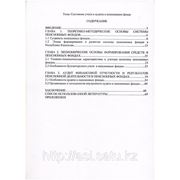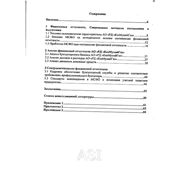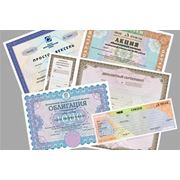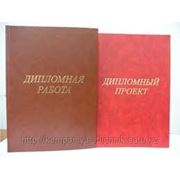Peculiarities of idioms in English language, Алматы
Описание товара
CONTENTS
INTRODUCTION
CHAPTER 1. IMPORTANCE OF THE IDIOMS IN THE LANGUAGE
1.1 Idiom, general characteristics
- Idioms versus collocations
CHAPTER 2. IDIOMATIC CLASSES
2.1 Inner structure of idiomatic classes
2.2 Peculiarities in idiomatic expressions
CHAPTER 3. PRACTICAL RESEARCH OF USING PHRASEOLOGICAL COLLOCATIONS AND IDIOMS
3.1 Aims and tasks of the practical research
3.2 Research of idiom’s structure
CONCLUSION
BIBLIOGRAPHY
GLOSSARY
INTRODUCTION
The theme of the research paper is “Peculiarities of idioms in English language”.
Idiom is a phrase or expression whose total meaning differs from the meaning of the individual words. For example, to blow one's top (get angry) and behind the eight ball (in trouble) are English- language idioms. Idioms come from language and generally cannot be translated literally (word for word). Foreign language speakers must learn them just as they would learn vocabulary words.
It is generally accepted that interpreters did not know much about the laws and rules of translation at the dawn of civilization. They did not have enough scientific knowledge, and some writers maintained later that translation was a problem which could never be solved (e.g., "All translation seems to me to be simply an attempt to solve an insoluble problem." W. von Humboldt).
But life went on, and people wanted to communicate (they wanted to be good neighbors in those times, too) and take it or leave it they had to interpret and had to translate. But still their translations were not without shortcomings and even left much to be desired.
And now, while the British scientist Theodore Savory says, in an effort to convince his colleagues, that "...both in the original and in translation, the matter is more important than the manner".[1] Russian writer Korney Chukovsky records: "The translator's aspiration for achieving semantic and stylistic identity of translation and the original is a lasting gain of our culture." An interpreter may say that translation is a bridge for mutual understanding among nations and that one has to know the laws and rules of engineering as well as to have the proper material for its construction at hand. [2] Nowadays English is worth not just knowing, but it is worth really knowing. There is a great importance to understand up-to-date English. English is the chief language of international business and academic conferences, and the leading language of international tourism. English is the main language of popular music, advertising, home computers and video games. Most of the scientific, technological and academic information in the world is expressed in English. International communication expends very fast. The English language becomes the means of international communication, the language of trade, education, politics, and economics. People have to communicate with each other. It is very important for them to understand foreigners and be understood by them. In this case the English language comes to be one but very serious problem. A word comes to be a very powerful means of communication but also can be a cause of a great misunderstanding if it is not clearly understood by one of the speakers.
Idioms come to be a very numerous part of English. Idioms cover a lot of drawbacks of the English language and it is one-third part of the colloquial speech.
The object of the work is the process of using phraseological units and idioms.
The subject of the work is peculiarities of idioms in the English language.
The hypothesis of the work is as following: if we develop awareness of using idiomatic sentences, we are sure to bring them closer to the authentically sounding speech.
The objective of the work is an attempt to study the aspects of idioms, the cases of their usage the frequency of idioms usage referring to English and Russian.
To achieve the set aim we determine the following tasks:
1. to classify idioms;
2. to study the problem of the translation of idioms;
3. to understand the aim of the modern usage of idioms;
4. to distinguish different kinds of idioms;
5. to analyze the frequency of idioms' usage referring to English and Russian.
For gaining the mentioned aim we used the following methods:
1. description;
2. observation;
3. critical study of scientific literature and fiction;
4. comparison and contrast.
Scientific novelty is concluded in the comparison of two languages, belonging to different language families.
Theoretical value consists in revealing the fact that idioms can't and mustn't be translated directly as such a branch of language as idioms are inseparably connected with nation's mentality and mode of life.
The practical value consists in the fact that the present work is a valuable manual for specialists concerned with teaching English and for those who study English and can be used as a teaching guide for stirring up idiomatic sentences. The results of the investigation are aimed at raising the quality of translations and preventing mistakes in comprehension.
Structurally the presented work consists of: introduction, three parts, conclusion, bibliography and glossary.
BIBLIOGRAPHY
1. Savory T. The Art of Translation, London, 1957
2. Чуковский К. Высокое искусство. М., 1968
3.
4. Каменецкайте Н. Л. Синонимы в английской фразеологии. М, 1971
5. Судзиловский Г. А. Сленг - что это такое? Английская просторечная военная лексика. М, 1973
6. Ворно Е. Ф., Кащеева М. А. и др. Лексикология английского языка. Л, 1955
7. Катцер Ю., Кунин А., Письменный перевод с русского языка на английский. М., 1964
8. Бархударов Л.С., Рецкер Я.И., Курс лекций по теории перевода, 1-й МГПИИЯ, М., 1968
9. The Bank of English, .
10. D.J. Allerton. Three or four levels of co-occurrence relations. Lingua, 63:17-40, 1984.
11. Lisa Ballesteros and W. Bruce Croft. Dictionary-based methods for cross- lingual information retrieval. In Proceedings of the 7th International DEXA Conference on Database and Expert Systems Applications, pages 791-801, 1996.
12. M. Benson, E. Benson, and R. Ilson. The BBI Combinatory Dictionary of English: A Guide to Word Combinations. John Benjamins, Amsterdam and Philadelphia, 1986.
13. Morton Benson. The structure of the collocational dictionary. International Journal of Lexicography, 2:1-14, 1989.
14. Kenneth Church and Patrick Hanks. Word association norms, mutual information, and lexicography. In Proceedings of the 27th meeting of the ACL, pages 76-83. Association for Computational Linguistics, 1989.
15. A.P. Cowie. The treatment of collocations and idioms in learner's dictionaries. Applied Linguistics, 2(3):223-235, 1981.
16. M.A.K Halliday and Ruqaiya Hasan. Cohesion in English. English Language Series. Longman, London, 1976.
17. Igor A. Mel'cuk and N. V. Pertsov. Surface-syntax of English, a formal model in the Meaning-Text Theory. Benjamins, Amsterdam/Philadelphia, 1987.
18. Michael Stubbs. Text and Corpus Analysis. Blackwell Publishers, Oxford, United Kingdom, 1996.
19. All meaning paraphrases are after Oxford advanced learner's dictionary of current English.
20. Makkai (1972) calls such constructions "idioms of encoding", since they are difficult to encode properly if one does not know them. They are distinguished from "idioms of decoding", such as tournures (kick the bucket), which maybe decoded in a wrong way, the result of which may be the disinformation of a learner.
21.
22. Ido Dagan and Kenneth Church. TERMIGHT: Identifying and translating technical terminology. In Proceedings of the Fourth ACL Conference on Applied Natural Language Processing, Stuttgart, Germany, October 1994. Association for Computational Linguistics.
23.Ido Dagan and Alon Itai. Word sense disambiguation using a second language monolingual corpus. Computational Linguistics, 20(4):563-596, December 1994.
24. P. Dempster, N. M. Laird, and D. B. Rubin. Maximum likelihood from incomplete data via the EM algorithm (with discussion). Journal of the Royal Statistical Society series B, 39:1-38, 1977.
25. Michael Elhadad. Using argumentation to control lexical choice: a unification-based implementation. PhD thesis, Computer Science Department, Columbia University, 1993.
26. R. Fano. Transmission of Information: A statistical Theory of Information. MIT Press, Cambridge, MA, 1961.
27. J. R. Firth. The technique of semantics. Transactions of the Philological Society, pages 36-72, 1935.
28. L. Bourbeau, D. Carcagno, E. Goldberg, R. Kittredge, and A. Polguere. Bilingual generation of weather forecasts in an operations environment. In Proceedings of the 13th International Conference on Computational Linguistics. COLING, 1990.
28. Peter F. Brown, Stephen A. Della Pietra, Vincent J. Della Pietra, and Robert L. Mercer. Word-sense disambiguation using statistical methods. In Proceedings of the 29th Annual Meeting of the Association for Computational Linguistics, pages 264-270, Berkeley, California, 1991.
29. Y. Choueka, T. Klein, and E. Neuwitz. Automatic retrieval of frequent idiomatic and collocational expressions in a large corpus. Journal for Literary and Linguistic computing, 4:34-38, 1983.
30. K. Church, W. Gale, P. Hanks, and D. Hindle. Parsing, word associations and typical predicate-argument relations. In Proceedings of DARPA Speech and Natural Language Workshop, (October Meeting). Morgan Kaufman: New York, 1989.
31. Kenneth Church, William Gale, Patrick Hanks, and Donald Hindle. Using statistics in lexical analysis. In Uri Zernik, editor, Lexical Acquisition: Exploiting On-Line Resources to Build a Lexicon, pages 116-164. Erlbaum, 1991.
32. The Cambridge International Dictionary of Idioms
33. Bahns, J. (1993). Lexical collocations: a contrastive view. ELT Journal. 47(1): 5663.
34. Bahns, J. and Eldaw, M. (1993). Should we teach EFL students collocations?
35. System. 21(1):101-114. Benson, M. (1985a). Collocation and idioms. In R. Ilson (Ed.) Dictionaries, Lexicography and Language Learning. Oxford: British Council and Pergamon.
36. Benson, M. (1985b). Lexical combinability. In Frawley, W. J. and Steiner, R. (Eds), Advances in Lexicography. Special issue of Papers in Linguistics. 18: 315.
37. Benson, M., Benson, E., and Ilson, R. (1986). The BBI Combinatory Dictionary of English. A Guide to Word Combinations. Amsterdam/Philadelphia: Benjamins.
38. Benson, M., Benson, E., and Ilson, R. (1995). Longman Dictionary of English
39. Collocations (English-Chinese). Hong Kong: Longman. Brown, D. F. (1974). Advanced vocabulary teaching: the problem of collocation. RELC Journal 5: 1-11. Brown, P. R. (1994). Lexical collocation: a strategy for advanced learners.
40. Modern English Teacher. 3(2): 24-27. Cowie, A. P. and Mackin, R. (1975). Oxford Dictionary of Current Idiomatic English. Vol. 1: Verbs with Prepositions and Particles. Oxford: Oxford University Press.
41. Cowie, A. P., Mackin, R. and McCaig, I. R. (1983). Oxford Dictionary of Current Idiomatic English. Vol. 2: Phrase, Clause and Sentence Idioms. Oxford: Oxford University Press. Firth, J. R. (1957). Modes of meaning. In Papers in Linguistics 1934-1951.
42. London: Oxford University Press. Huang, W. (1991). A Dictionary of English Collocations. Jiangsu: Jiangsu Educational Press.
43. Lewis, M. (1993). The Lexical Approach: The State of ELT and a Way Forward.
44. London: Language Teaching Publications. Ma, B. and Drave, N. (1993). Collocation Problems in Technical Writing. Paper presented at Second International Conference on English for Professional Communication. City Polytechnic of Hong Kong, March, 1993.
Похожие услуги от « ASI»
Услуги, похожие на Peculiarities of idioms in English language
Вы можете заказать товар Peculiarities of idioms in English language в интернет-магазине ASI через нашу систему. Стоимость составляет 30000 Тенге, а минимальный заказ - 1 шт. В текущий момент товар находится в статусе "в наличии".
Организация ASI является зарегистрированным поставщиком на сайте BizOrg.su.
Служебная информация:
На нашей торговой площадке для удобства, каждой компании присвоен уникальный код. ASI имеет ID 161747. Peculiarities of idioms in English language имеет код на сайте - 7501682. Если у вас обнаружились сложности при сотрудничестве с компанией ASI – сообщите идентификаторы компании и товара/услуги в нашу службу по работе с клиентами.
Товар был добавлен на сайт 16/09/2013, дата последнего изменения - 14/04/2020. С начала размещения товар был просмотрен 1001 раз.













